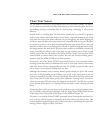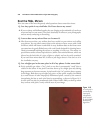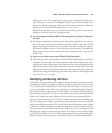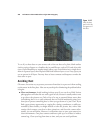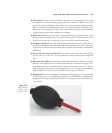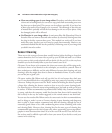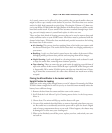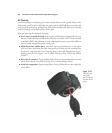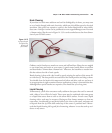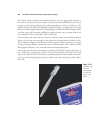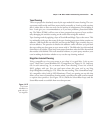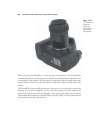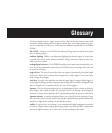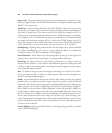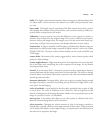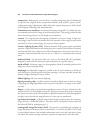
Brush Cleaning
If your dust is a little more stubborn and can’t be dislodged by air alone, you may want
to try a brush, charged with static electricity, which can pick off dust spots by electrical
attraction. One good, but expensive, option is the Sensor Brush sold at www.visible-
dust.com. A cheaper version can be purchased at www.copperhillimages.com. You need
a 16mm version, like the one in Figure 14.13. It can be stroked across the short dimen-
sion of your D7000’s sensor.
Chapter 14 ■ Nikon D7000: Troubleshooting and Prevention 485
Figure 14.13
A proper brush
is required for
dusting off
your sensor.
Ordinary artist’s brushes are much too coarse and stiff and have fibers that are tangled
or can come loose and settle on your sensor. A good sensor brush’s fibers are resilient
and described as “thinner than a human hair.” Moreover, the brush has a wooden han-
dle that reduces the risk of static sparks.
Brush cleaning is done with a dry brush by gently swiping the surface of the sensor fil-
ter with the tip. The dust particles are attracted to the brush particles and cling to them.
You should clean the brush with compressed air before and after each use, and store it
in an appropriate air-tight container between applications to keep it clean and dust-free.
Although these special brushes are expensive, one should last you a long time.
Liquid Cleaning
Unfortunately, you’ll often encounter really stubborn dust spots that can’t be removed
with a blast of air or flick of a brush. These spots may be combined with some grease
or a liquid that causes them to stick to the sensor filter’s surface. In such cases, liquid
cleaning with a swab may be necessary. During my first clumsy attempts to clean my
own sensor, I accidentally got my blower bulb tip too close to the sensor, and some sort
of deposit from the tip of the bulb ended up on the sensor. I panicked until I discov-
ered that liquid cleaning did a good job of removing whatever it was that took up resi-
dence on my sensor.



